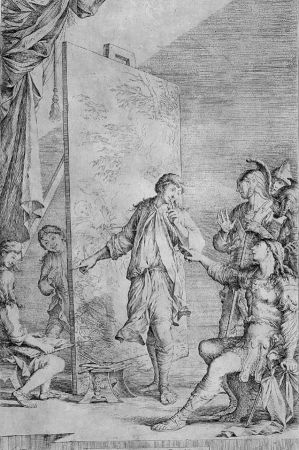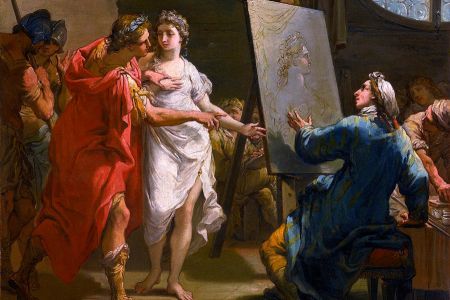Shoemaker stick to your last - Apelles
- Written by Portal Editor
In our articles about the ancient city of Kolophon (located about 35 kilometers from Izmir on the way to Kusadasi) and its important citizens, we have already reported about the outstanding philosopher Xenophanes and the poet Mimnermos from the time of ancient Greece.
Another great name belonging to antiquity was that of the painter Apelles, who was also born in Colophon around 375 BC and was able to grow up there.

Although none of Apelles' paintings have survived, his works of art are considered the pinnacle of ancient painting. Of course, the inclined reader then asks why Apelles was chosen as the master of his craft. The reason for this lies in the large number of literary records, which, however, exist in a traditional form. As the satirist Lucilius wrote:
"since I have seen a painting of Apelles far superior to any other work of art that I have seen in my life"
In the work "Satyricon" by the satirist Petronius, he describes a painting by Apelles as follows:
"Moreover, the so-called man on one leg by Apelles made me almost sink in adoration. For the contours in the pictures were traced from life with such delicacy that one might have thought that the painting had also captured the mental processes. On the one hand the eagle abducted Ida's shepherd high in the air, on the other Hylas, radiantly beautiful, pushed back the importunate naiad. Apollon cursed his murderous hands and blessed his still relaxed lyre with the flower that had just emerged.”
Lucian reports on what is probably Apelle's best-known work, "The Slander", as follows:
(quotes taken from wikipedia)
Other of the most well-known images celebrated everywhere were an effigy of Alexander holding a thunderbolt destined for the Temple of Artemis at Ephesus, a charis for the Odeon at Smyrna (modern day Izmir), and an effigy of Alexander mounting a victory car.
Even by his closest rival, Protogenes, Apelle's works were highly praised for their grace and sensuous appeal, their flourishing coloring coupled with their scientific rigor and correctness of expression. The background of his basic Sicyonian training was clearly visible. Apelles is even said to have used the famous Phryne as a model for a portrait of Aphrodite emerging from the sea.
Especially during the Renaissance, some of Apelle's paintings were repeated by the great painters of the period because of the excellent descriptions. These include above all Botticelli, who copied the painting "The Slander" by Apelles, as well as Albrecht Dürer, who used motifs from Apelles in 1521 to paint the Great Council Chamber of the Nuremberg City Hall. Unfortunately, only fragments of this have survived.
Supposedly even the saying "Cobbler stick to your last" - which is still used today - goes back to Apelles. One of Apelle's peculiarities is said to have been the ability to eavesdrop on the conversations of viewers of his works by hiding behind his pictures. One day a shoemaker is said to have complained that an eyelet for the shoelace was missing on a painted shoe. After Apelles corrected the image, it was again the shoemaker who then criticized something on the thighs of the person depicted. Apelles then became angry and replied to the shoemaker that he could certainly judge the shoes, but that he was not allowed to judge anything about the shoe: "... ne supra crepidam sutor iudicaret ..." (Pliny the Elder), from which the commonly used idiom "Ne sutor ultra crepidam" developed.
Please read as well:
St. Sophia Church (Crkva Sveta Sofija) in the center of Ohrid
